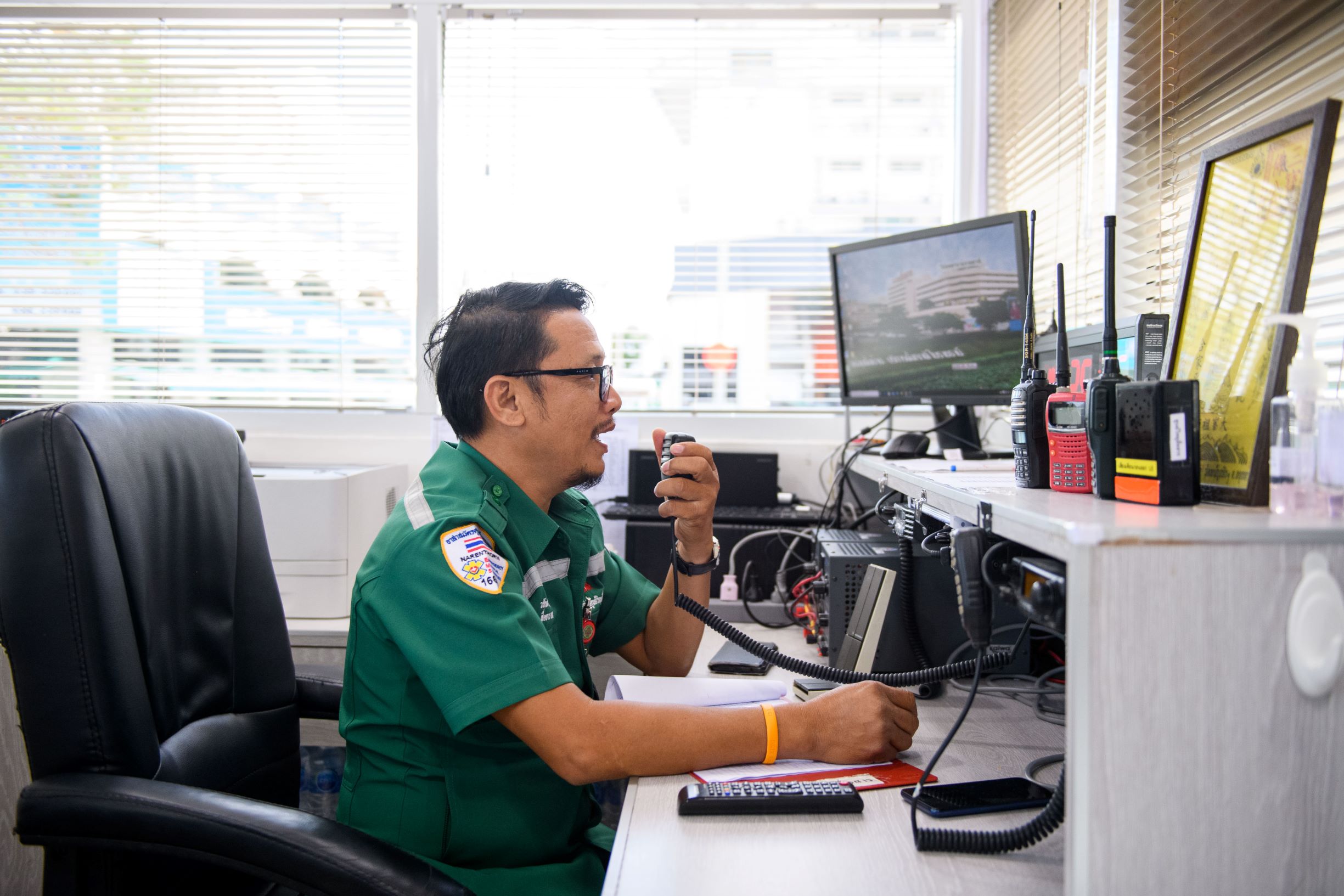
In a difficult economic climate, Rajthanee Hospital enhanced its medical services with effective connectivity solutions
At the end of January, there was a rumour on social media that a COVID-19-infected Chinese tourist was receiving treatment at Rajthanee Hospital, the largest private hospital in Phra Nakhon Si Ayutthaya province. The fake news was spreading fear and panic among many locals and the hospital’s patients.
“Once the rumour spread, we received calls and texts from our doctors, medical staff, and patients non-stop. We had to use every communication channel to inform the public the right information, from the patient LINE group, text messages, to our Facebook page. If we didn’t immediately communicate, it would have caused great damage to the hospital. Efficient communication tools helped us through the crisis,” said Surin Prasithirun, M.D., Chief Executive Officer of Rajthanee Hospital.

Rajthanee Hospital was founded in 1992 by a team of doctors from the Faculty of Medicine Siriraj Hospital, Mahidol University, as they saw a lack of basic health services in the area, where many factories and industrial estates are located. It is the first private hospital in the province and is today well-known for specialised medical centres, from orthopaedic centre, minimal invasive surgery centre, oncology clinic, cardiology centre, to accident and emergency centre. The hospital also plans to open a beauty centre soon. “Our goal is to be a leading private hospital in the lower central region. We want patients here to think of us first before they go to Bangkok,” said Dr. Prasithirun.
Despite easing lockdown measures, the hospital relies on communication technologies to maintain strict social distancing. And with people taking more precautions when going out, the hospital communicates with its patients through text messages and the LINE application to reduce face-to-face interactions. Patients are notified when the appointment date is close, and prescribed medicines are shipped to patients who don’t have to receive physical care at the hospital.
Rajthanee also plans to implement a queue management mobile application to reduce waiting time for medical services and prescriptions as well as QR code payment to create a touchless experience. But Dr. Prasithirun admitted that for a provincial hospital like this, a move to digital should happen one step at a time. The same is true for telemedicine, which attracts a lot of interest in the COVID era.
“I think telemedicine is useful for providing preliminary advice. But to do so, we need easy-to-use home healthcare equipment that can provide reliable data as it is critical for accurate diagnosis,” explained Dr. Prasithirun “If we have these tools in hand, it will help facilitate hospital admissions as pre-hospital diagnosis has been done, and people only come to a hospital when necessary.”

Communication technologies also enable smooth co-operation between medical staff, from sending text and picture messages to video conferencing for doctor to-doctor consultations, resulting in a faster and more accurate diagnosis. “Sometimes our doctors just take a picture of a wound to seek medical advice from other medical specialists, so these specialists don’t need to actually travel to the hospital. This helps reduce surgery duration, which is preferable for a patient,” said Dr. Prasithirun.
Another issue that the doctor pointed out is a growing demand for specialised care. As many hospitals have limited intensive-care unit (ICU) beds, transfers of patients from one hospital to another happen frequently.
“Our system is linked with the one at Rajthanee Rojana. We can see the latest medical records of every patient and what drugs they were prescribed. This helps prevent patients from getting the same prescription twice and facilitates communications between doctors,” explained Dr. Prasithirun. “With all information online, they can read an x-ray film from their phone. They can do everything from a phone.”
To do so, the hospital uses connectivity services from dtac, such as the dtac business WorryFree package, an effective way to reduce costs without compromising on quality of service. “Previously there were extra charges from unknown calls and text messages on our phone bills. Everything becomes simple now thanks to the unlimited speed internet package from dtac business. The service helps support our medical staff and lead to a more efficient cost management,” said Dr. Prasithirun.
The COVID-19 pandemic is wreaking havoc on global economies and has lowered consumer purchasing power. But Rajthanee Hospital has switched to a leaner and more efficient operations management since before the outbreak. And digital tools are used to build a modern workplace culture, resulting in greater employee and patient satisfaction. “We are sincere with our shareholders, patients, staff, and partners. We provide reasonable healthcare,” said Dr. Prasithirun. “We continue giving our employees raises and bonuses despite the outbreak. But the business needs to stay profitable, too, this is why we are careful with cost control.”